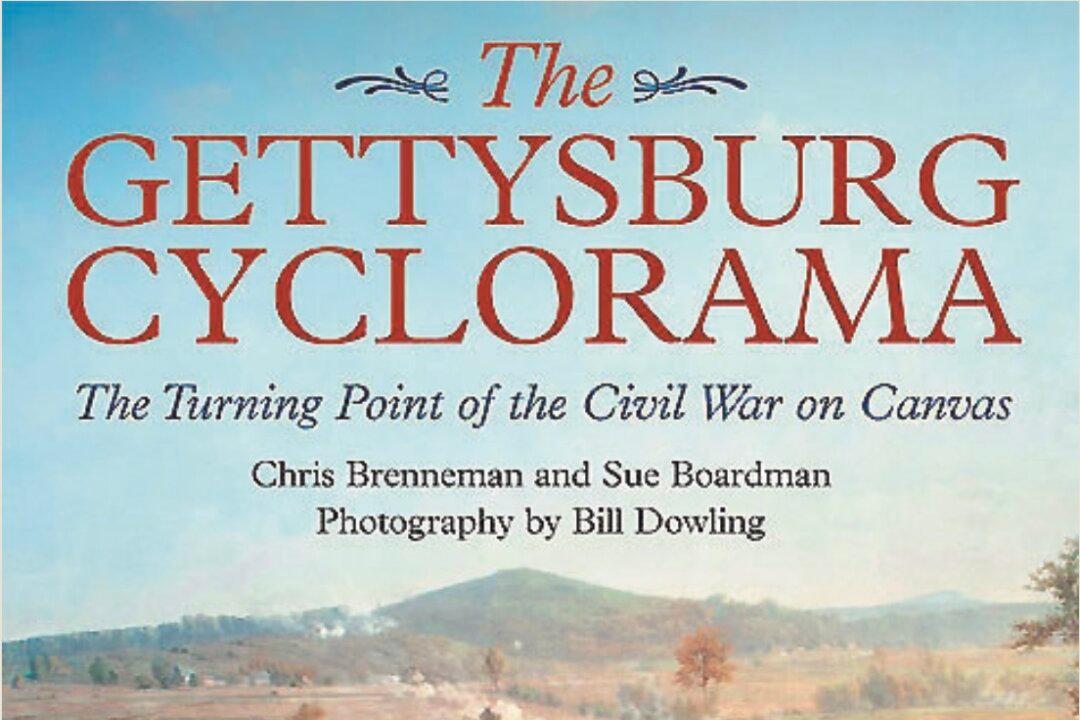“Life imitates art far more than art imitates life,” penned Oscar Wilde in an 1889 essay, “The Decay of Lying.” Yet “The Gettysburg Cyclorama: The Turning Point of the Civil War on Canvas” is one exception. The book’s writers, Chris Brenneman and Sue Boardman, who have worked as licensed guides at the Gettysburg National Military Park in Pennsylvania, acknowledge that there have been thousands of books written about the worst battle of the Civil War, with 51,118 casualties over three days. However, this book uniquely scrutinizes the battle from an artistic angle, specifically through Paul Philippoteaux’s immense, 19th-century cyclorama painting, “The Battle of Gettysburg.”
In a succinct, approachable style, the book’s writers first provide background about the events of July 1 to 3, 1863, when 30,000 Confederate forces crossed into Pennsylvania from Virginia to fight 20,000 Union forces, with the final battle on July 3 being America’s bloodiest. Although black and white photography was by the 1860s a more commonplace medium, it was the trend toward oil-painted cyclorama during the late 19th century that served to document in intense color and detail the physicality of precise battles.





